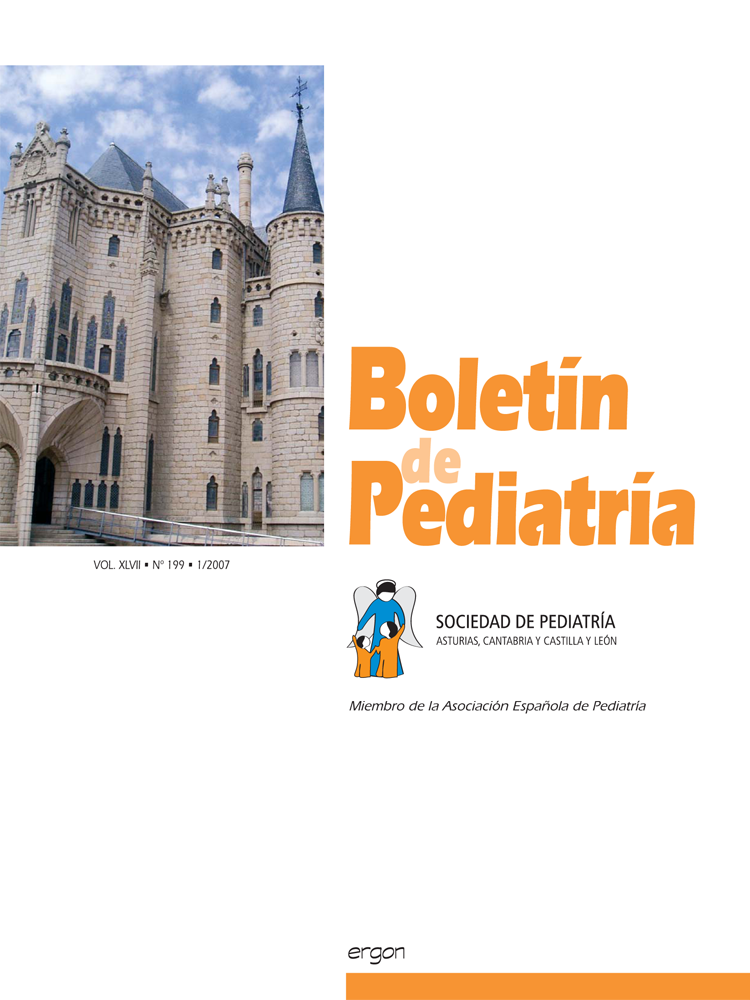Abstract
Objectives: analyze the clinical, epidemiological characteristics and the factors that may predict esophageal injuries in the child population admitted to our hospital due to intake of caustics.
Material and methods: a retrospective study was done of the patients who required admission due to caustic intake in the last six years. Different variables were collected from the clinical history, the following standing out among them: age, gender, type of caustics, pH of the liquid, symptoms, evolution time and conduction of endoscopy.
Results: since the year 2000 until the third quarter of 2006, 35 children were admitted to our hospital with the suspicion of having ingested a caustic substance. Of them,19 were male and 16 female. Mean age was 2.6 years. Ten of the patients had been referred from hospitals of other provinces. The caustics ingested were bleach (40.0%), ammonium (17.1%), soda (11.4%) and industrial dishwasher soap (11.4%). In 42.9% of the cases, the families rejected procedures that could worsen the injury. The most frequent symptoms were vomiting (11 patients), lip wounds (8 patients), genian mucosal lesions (9 patients), burns under tongue (12 patients). Endoscopy was indicated in 23 patients, that was carried out at a mean of 31.5 hours after intake. In 26,3 of the endoscopes, esophageal injuries were observed (type 2a 10.5% and type 2b 15.8%). The most aggressive caustics were soda, ammonium and industrial dishwashing soap. Atendency was observed to find a relationship between the number of symptoms present and the likelihood of an endoscopic lesion.
Conclusions: bleach is the caustic agent most involved in this type of accident. Soda, ammonium and industrial dishwashing soap are the most dangerous liquids. Family members are continuing to perform inadequate procedures after intake. The best treatment is a good preventive one.

This work is licensed under a Creative Commons Attribution-NonCommercial 4.0 International License.
Copyright (c) 2007 Boletín de Pediatría
